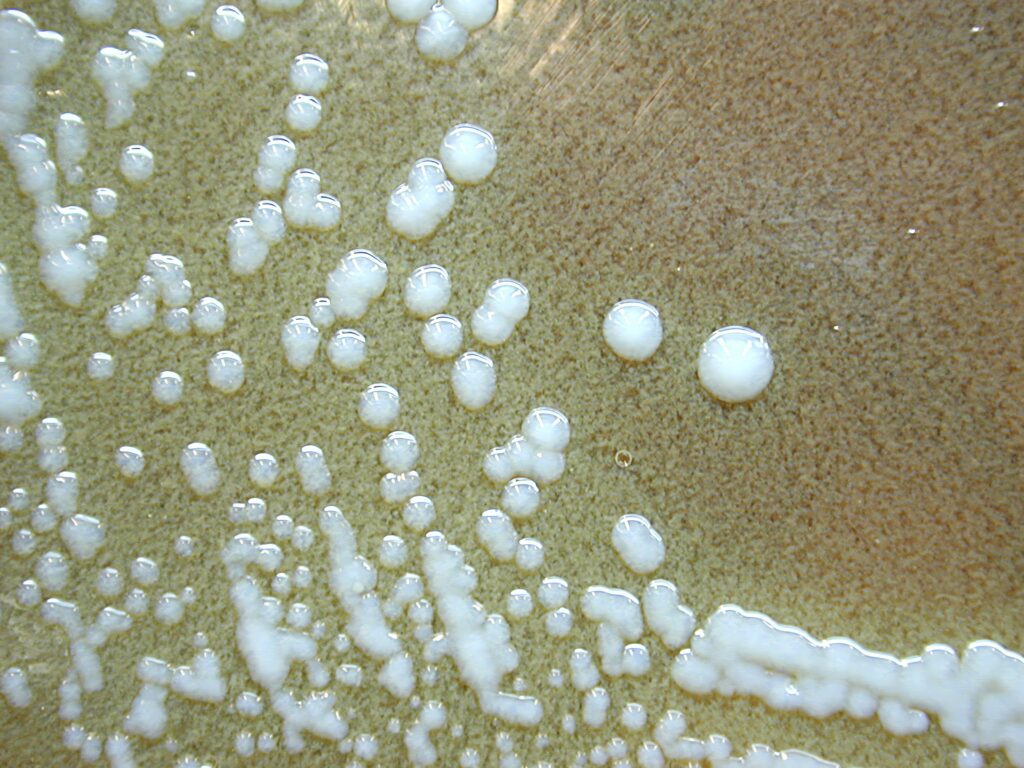Welcome to this week’s spotlight! In the mysterious and often treacherous world of microorganisms, Francisella tularensis quietly stands out as a master of stealth and lethality. This tiny bacterium may go unnoticed by the naked eye, but its impact on human health is anything but small. Responsible for the rare but potentially deadly disease tularemia, Francisella tularensis lurks in nature, waiting to strike through infected animals, insects, or even contaminated water. Though invisible to us, it’s a reminder of how vulnerable we remain to nature’s most subtle threats.

What is Francisella tularensis?
In the vast and intricate realm of bacteria, some pathogens hide in the shadows, waiting for the right moment to strike. One such elusive threat is Francisella tularensis, a bacterium responsible for a deadly disease known as tularemia, or more grimly, “rabbit fever.” While it may not have the global notoriety of other microbial killers, Francisella tularensis is a quiet but formidable foe, capable of unleashing serious illness in humans and animals alike.
Francisella tularensis is a small, gram-negative bacterium first identified in the early 20th century in the United States. Despite its size, it has made a significant impact, being recognized as one of the most infectious bacteria known to science. A mere ten organisms are enough to cause infection. Its name is derived from Tulare County in California, where the bacterium was first isolated, though its reach extends far beyond this region.
Tularemia, the disease caused by F. tularensis, can be contracted in various ways—through the bite of infected ticks or deer flies, direct contact with contaminated animal tissues (particularly rabbits and rodents), ingestion of contaminated water or food, or inhalation of aerosolized bacteria. Once inside the human body, this bacterium works swiftly and silently, often evading the immune system for long enough to establish a serious infection.
Symptoms of tularemia can vary depending on the route of infection but often include fever, skin ulcers, swollen lymph nodes, and respiratory complications. In severe cases, especially when inhaled, tularemia can cause pneumonia, making it potentially life-threatening if left untreated. While the disease is treatable with antibiotics, early detection is crucial, as the bacterium can spread rapidly and cause significant damage if not addressed in time.

What makes Francisella tularensis particularly concerning is its potential use as a bioterrorism agent. Its high infectivity, combined with its ability to be aerosolized, makes it a dangerous candidate for weaponization. The U.S. Centers for Disease Control and Prevention (CDC) has classified F. tularensis as a Category A bioterrorism agent, placing it in the same class as anthrax and smallpox. This adds a layer of urgency to research and preparedness efforts aimed at managing and mitigating its threat.
While F. tularensis may lurk in the shadows, the ongoing work of scientists and healthcare professionals offers hope in the battle against tularemia. Public health efforts, including awareness campaigns, tick control programs, and water safety measures, play a vital role in reducing the risk of infection. Moreover, advancements in diagnostic tools and antibiotics ensure that those who fall victim to this silent stalker have a better chance of survival.
As we continue to unravel the mysteries of the bacterial world, Francisella tularensis serves as a reminder of the hidden dangers that can emerge from nature’s smallest creatures. It is a bacterium that may not always announce its presence loudly, but its impact can be devastating when left unchecked. Vigilance, early detection, and continued scientific exploration are key to keeping this bacterial stalker at bay.

You can find the original images on this story through this link
Thanks for joining us on this microscopic journey into the world of Francisella. We hope you found this week’s feature as intriguing as we did. Don’t forget to check back next week for another captivating look into the unseen world around us. Until then, stay curious and keep exploring!


My name is Ali Emre Cabadak, a dedicated biology enthusiast currently pursuing my studies at Marmara University, where I am majoring in Bioengineering. As a passionate advocate for scientific discovery and innovation, I am the founder of Biologyto. My goal is to bring the wonders of biology closer to everyone and inspire a new generation of thinkers and innovators. Through Biologyto, I aim to write scientific articles that delve into the fascinating world of biology, sharing insights and discoveries that inspire curiosity and innovation.





